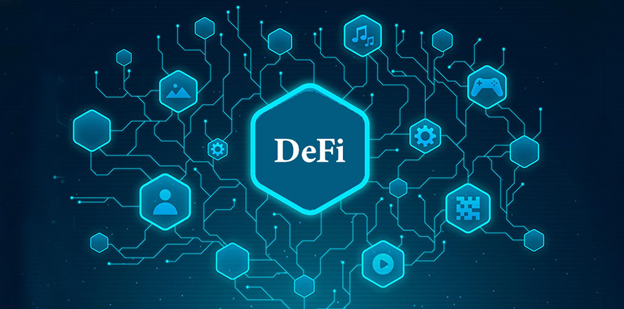The art of trading crypto assets has minted several millionaires over the past decade; today, we have over 13,000 cryptocurrencies listed on both centralized and decentralized exchanges. More importantly, the crypto market is a 24/7 ecosystem which means that traders have an opportunity to make money throughout the year. However, it is not as easy as it sounds; a good number of people have also lost fortunes trying their hand at trading digital assets.
So, how exactly do crypto traders get access to some of the life-changing investments? There are two primary channels of trading cryptocurrencies; centralized exchanges (CEX) and decentralized exchanges (DEX). While both setups are designed to give users maximum utility, there has been a growing interest in the latter following regulatory crackdowns and mismanagement of funds by CEXs.
According to a recent report by The Block, DEXs recorded over $1 trillion in trading volumes in 2021, marking an 858% increase from the previous year. That said, this burgeoning crypto trading niche still faces a myriad of challenges; most notably, DEX traders are often limited to a single blockchain environment. A shortcoming that often makes it hard to capitalize on the best trades across various DeFi protocols.
Should this really be the case? While some might argue that DeFi is a work in progress, it is quite evident that innovators need to create solutions that bridge the gap between DEXs, regardless of the chain they operate on. Luckily, it seems that some players are finally heeding to this call, we are now seeing a paradigm shift, with DeFi projects launching their products on several blockchains while others debut interoperability solutions.
A Sigh of Relief
As it stands, Uniswap (v3) is currently the leading DEX, with a market share of 41.6%. However, it is only compatible with the Ethereum blockchain, a limitation that has left out most of the small-time DeFi traders given the high gas fees required to execute swaps. Additionally, users can only trade crypto tokens that are ERC-20 compatible, leaving out other potential digital assets that reside on Layer-1 blockchains such as Solana and Avalanche.
What if there was a way for crypto traders to capitalize on more opportunities without having to switch the blockchain environment? To this end, Sushiswap has integrated support for several blockchain ecosystems, including Avalanche, Polygon, Harmony and Fantom. Ideally, the platform’s users can swap various crypto tokens hosted on the aforementioned ecosystems through the AtomixDEX built-in wallet.
For those who prefer to trade with leverage, the Primex liquidity protocol is another DeFi trading ecosystem where one can margin trade several crypto assets across different chains. This DEX-agnostic and cross-margin DeFi trading platform will run on top of several DEXs, including CurveFinance, Sushiswap and Uniswap. Above all, Primex features credit buckets, enabling its users to enter under collateralized margin positions.
With DeFi set to continue on its upward trajectory once the market conditions stabilize, cross-chain solutions will play a fundamental role in adoption. The featured examples in this article are some of the leading innovations that are currently addressing the issue. While it may take some time before most crypto projects come to the realization, it is a no-brainer that interoperability is the way to go.
“While pure decentralization within individual blockchain networks is a top priority for many blockchain projects, the ability to establish network interoperability across multiple blockchains presents an even more advanced embodiment of blockchain technology’s promise to decentralize systems and economies.” noted a recent blog by Gemini crypto exchange.
Closing Thoughts
The decentralized economy is gradually challenging the long-standing dominance of traditional finance ecosystems. Given the rate at which both retail and institutional investors have been allocating funds into the DeFi market, it is more likely than not to witness a revolution in the coming decade. An era where investors no longer have to go through centralized brokers to make a living; instead, DeFi protocols will replace these intermediaries.
That being the case, interoperability is undeniably important in the upcoming decentralized financial markets paradigm. Investors will be better off trading across different DEXs as opposed to being confined within one specific platform. As highlighted in this article, developments are in progress to make cross-chain trading a more seamless experience. It is only a matter of time before DeFi natives get a taste of the much-anticipated freedom.


